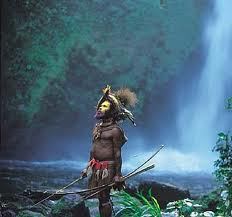Bromo Tengger Semeru National Park
The national park is named after its two mountains, Mount Semeru is the highest in Java at 3,676 m, Mount Bromo is the most popular and the Tengger people who inhabit the area.
Mount Semeru also known as Mahameru, "Great Mountain", is one of Indonesia's most active volcanoes. What stands out most about this mountain is the fact that it erupts periodically. Every 20 min or so, the volcano belches out a huge cloud of steam and smoke, sometimes interspersed with ash and stones. Climbing Mount Semeru requires some planning and a permit from the national park authority. The mountain is often closed due to its highly active nature.

Mount Bromo 2,329 m is easily recognized as the entire top has been blown off and the crater inside constantly belches white sulphurous smoke. It sits inside the massive Tengger caldera, diameter approximately 10 km, surrounded by the Sea of fine volcanic sand. The overall effect is unsettlingly unearthly, especially when compared to the lush green valleys all around the caldera.
The major access point is Cemoro Lawang at the northeastern edge of the caldera, but there are also trails from Tosari northwest and Ngadas southwest. The village of Ngadisari, on the road from Probolinggo about 5.5 km before Cemoro Lawang, marks the entrance to the national park. Both Cemoro Lawang and Ngadisari are rather picturesque, with brightly painted houses and flower beds outside.

The area in and around the park is inhabited by the Tenggerese, one of the few significant Hindu communities left on the island of Java. The local religion is a remnant from the Majapahit era and therefore quite similar to that on Bali but with even more animist elements.
The Tenggerese are believed to be descendents of the Majapahit princes and were driven into the hills after mass arrivals in the area of devoutly Muslim Madurese in the 19th century. These Madurese immigrants were labourers working for Dutch coffee plantation owners and the native Hindu people of the region soon found themselves outnumbered and either converted to Islam or fled to the inhospitable high mountain tops where they remain today.
The religion is quite low key though with the most visible manifestation of faith being the rather austere Poten temple in the sea of sand. The Tenggerese number about 600,000 and they reside in 30 villages scattered in and around the park with smaller communities elsewhere in East Java.

For many visitors, the sight of the angular-faced, sunburned, moustachioed Tenggerese wrapped in poncho like blankets, trotting about on ponies with craggy mountains as the backdrop, more resembles Peru than Indonesia.
If a landscape was ever needed to demonstrate the meaning of the phrase desolate beauty, then this is surely it. Rugged, barren volcanic peaks, gravel plains and that sea of sand. Truly unworldly.
The park also includes large areas which are very lush and green fed by rivers from the high tops. The medium elevations are clad with much thinner forest before this gives way to the barren plateau and peaks.
In the parts of the park which most interest visitors the caldera and mountain top, flora and fauna is limited, a general lack of vegetation. At lower elevations and away from the sea of sand there are though lush green valleys with a typical tropical forest flora. The higher elevations before the tree line ends are largely clad with casuarina forest.

Down in the valleys, a few leopard cats are present but rarely seen. Java rusa deer, muntjac, marbled cat and wild pig are amongst the mammals more likely to be glimpsed by casual visitors. This park is not so renowned for birdwatching as others in Java but up on the plateau you often see hawks and eagles soaring over the valleys below.
Temperatures are refreshingly cool during the day but outright cold at night as temperatures can drop close to zero in the summer and are rarely much above 5°C in winter. Daytime temperatures anywhere in the park never exceed 20°C with low teens being normal.
It can rain at anytime and the means average rainfall is 6,600 mm. Most of that comes in the wet season though since November to March. During periods of heavy rain in January and February especially, many parts of the park are inaccessible due to flooding. Landslips are also a real issue at these times.
_______________________________________________________________________________





































